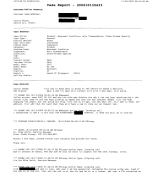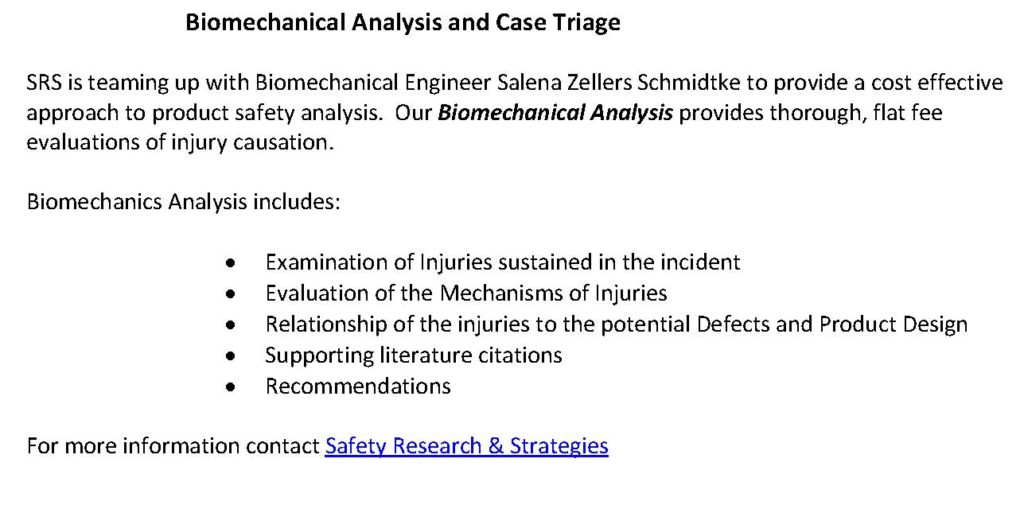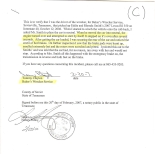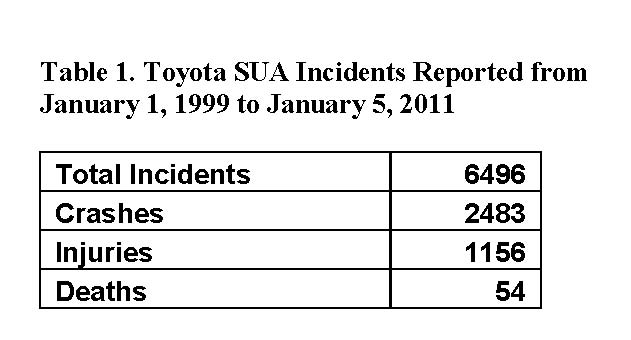February 17, 2011
Last week, NHTSA pitched its two technical tomes on Toyota unintended acceleration at a pack of reporters, declared that the automaker’s electronics were fine, and ran away. Our esteemed Secretary of Transportation Ray LaHood then made the media rounds, grousing that the critics hadn’t read the report, which leads us to ask: Did Ray?
We’ve been reading it and re-reading it, and conferring with a wide range of technical experts – some of whom have extensive experience in engine management control design, validation and testing. And we gotta tell you, Ray, we aren’t ready to buy our kid a new Toyota.
Far from exonerating Toyota electronics, the reports by NHTSA and the NASA Engineering and Safety Center (NESC) confirm the paucity of the automaker’s safety diagnostics. The NESC team also identifies how the two signals in the accelerator pedal position sensor can be shorted in the real world – leading to an open throttle (aka, tin whiskers). Hell, NESC found the potential in three pedals – that’s a pretty significant percentage in a very small sample. Tin whiskers are such a serious issue that NASA has devoted considerable resources to studying them. They have wreaked electronic havoc on everything from medical devices to weapons systems and satellites. Yet, the NESC report treated the discovery of tin whiskers in a third of their pedal sample like a dead end, instead of a promising avenue of study.
February 8, 2011
In his characteristically colorful way, Secretary of Transportation Ray LaHood told reporters today: “We enlisted the best and brightest engineers to study Toyota’s electronics system, and the verdict is in. There is no electronic-based cause for unintended, high-speed acceleration in Toyotas.” LaHood issued this scientific proclamation based on the National Aeronautics and Space Administration “rigorous” […]
While NHTSA and NASA have been busy in their test labs, we’ve been busy doing some testing of our own. And, although our findings are preliminary, we’re uncovering important clues to the gaps in Toyota’s electronic safety net. We haven’t seen NHTSA’s report, but we’re hearing the sound of hands dusting themselves off and feet […]

Safety Research & Strategies has obtained internal Toyota documents that illustrate Toyota has successfully duplicated unintended acceleration incidents related to electronic failures. Rhonda Smith’s incident involving a 2007 ES 350 occurred on Oct. 12, 2006, and shortly thereafter, Toyota brought in a Field Technical Specialist to inspect the vehicle. According to Toyota’s internal documents: *** […]
February 4, 2011
Someone should have seen this one coming.
In November, a New York woman filed a lawsuit against Toyota, claiming that its keyless entry system resulted in the death of one man and her own debilitating injuries. How did it happen? Carbon monoxide poisoning from her Lexus, inadvertently left running in the garage under her home. Mary Rivera, of Queens, New York alleged that her so-called Smart Key, an electronic fob system, allowed her to exit the vehicle without it being turned off. The engine was so quiet Rivera didn’t notice that the motor was still running.
Just another one of those crazy lawsuits where some consumer does something really dumb and tries to blame the hapless manufacturer, right? More fodder for all those conservative blatherskites who love to dump on trial lawyers, right?
Actually, no. This preventable tragedy is the inevitable consequence of bad design and a NHTSA’s interpretation of the rules.

February 1, 2011
The Society of Automotive Engineers resumed its ongoing boxing match over injury causation in rollovers at last week’s SAE Government Industry meeting. In Malibu’s corner was Wayne State and University of Michigan’s Transportation Safety Institute, presenting research supporting the theory of occupant diving as the mechanism of head and neck injury in rollovers – regardless of roof crush.
(For those of you who haven’t followed this 25-year-old scrum, Malibu refers to two sets of experimental rollover tests General Motors conducted in 1983 and 1987 on Chevrolet Malibus. Known as Malibu I and II, the tests were conducted to validate the theory that occupants don’t suffer head and neck injuries because the roof collapses on them, but because the force of the crash propels them into the roof. Over the years, automakers have clung to the Malibu results, despite crash data showing that the number of deaths and injuries in rollover accidents has risen disproportionately, with more than quarter of the accidents involving a serious roof intrusion.)
On the other side was NHTSA, arguing that roof strength is related to injury. It’s refreshing – if ironic – to see NHTSA champion a relationship between intrusion and injury. The agency is a late convert to this view; after years as an adherent of the Holy Gospel of Malibu.
Meanwhile, over at the Transportation Research Board’s Annual Meeting – also last week – research from less likely suspects supported the need for stronger roofs.

January 24, 2011
Safety Research & Strategies’ continuing investigation into Toyota SUA is building momentum as new defect issues emerge from murky, unregulated vehicle electronics. We have also found a document that suggests that Toyota lied to the driver in one of this issue’s most hotly debated incidents. We’ll start with the document. You may recall Rhonda and […]

January 19, 2011
Safety Research & Strategies has completed our latest review of Toyota unintended acceleration complaint data, and they confirm that Toyota owners are still reporting SUA incidents – even those who had taken their vehicles in for the recall repairs.
Our database consists of incidents from the following sources:
– Consumer complaints to NHTSA through January 5, 2011
– Toyota-submitted claims from several NHTSA investigations into unintended acceleration
– Incidents reported by media organizations
– Consumer contacts made to our organization and others that are reporting incidents that they have received.
Every effort has been made to identify duplicate records and combine them. However, often the reports do not provide enough detail to link incidents to other reports. There are likely some duplicates among our records – if there are, they are few.
January 14, 2011
Forty years after automakers fought off regulations that would have actually tested rollover occupant protection, the National Highway Traffic Safety Administration has published a final ejection mitigation rule, which favors the installation of bigger and more longer-deploying side airbags and takes a half-step forward on improving side glazing.
The rule establishes a new Federal Motor Vehicle Safety Standard 226 Ejection Mitigation. FMVSS 226 applies to the side windows next to the first three rows of seats in motor vehicles with a gross vehicle weight rating of 10,000 pounds or less. The performance-based standard would institute a compliance test in which an impactor would be propelled from inside a test vehicle toward the windows. The ejection mitigation system would have to prevent the impactor – based on the mass imposed by a 50th percentile male’s upper torso on the window opening – from moving more than a specified distance beyond the plane of the window. Each side window would be impacted at up to four locations around its perimeter at two time intervals following deployment, to ensure that the airbags remain deployed for the beginning and end stages of a rollover.
January 4, 2011
In 2010, NHTSA levied nearly $50 million in fines against Toyota for flouting the recall regulations in three separate instances. The total represents the largest single fines in the agency’s history – and, (although we haven’t checked) quite possibly more than the agency has ever collected from any and all automakers in 40 years of existence.
This tough stance on recall timeliness is welcome – but does not resolve the larger issues raised by Toyota unintended acceleration – namely how defects are defined in the era of automotive electronics and how such defects are investigated when they are rare, multi-root-cause, and potentially deadly?
The dribble of documents released by the Multi-District Litigation and Congress so far show that UA has been duplicated by Toyota technicians and, contrary to attempts by Toyota advocates and agency investigators to pass off all incidents as driver error, sticky pedals, big shoes and floor mats, there are instances when reliable technical personnel take the vehicle for a test spin and experience UA with no pedal involvement. In fact, we have discovered that Toyota techs were able to duplicate UA in one of very public and widely debated case – but lied to the consumer about it. (We’ll feature that story in a future post.)